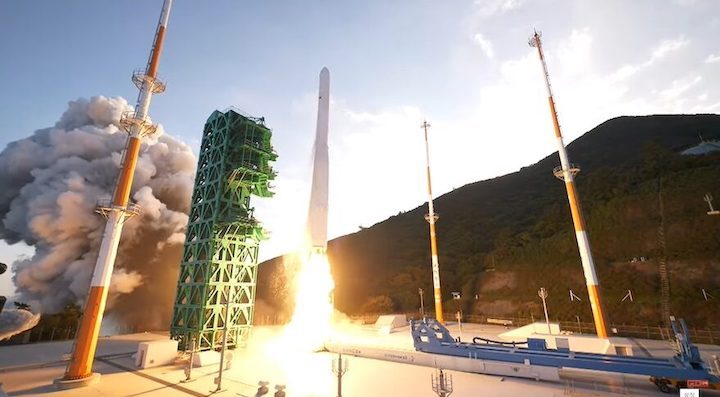4.01.2022

SEOUL, South Korea — The failed October debut of South Korea’s KSLV-2 rocket is being blamed on improperly anchored helium tanks inside the three-stage rocket’s upper stage.
The kerosene and liquid oxygen-fueled KSLV-2, South Korea’s first entirely domestic rocket, performed well during the early phases of the Oct. 21 test flight but released its dummy payload into an unsustainable orbit when its upper-stage engine shut down 46 seconds early.
A failure investigation led by the Korea Aerospace Research Institute (KARI) concluded that improperly designed structures allowed helium tanks inside the upper stage to come loose during flight, resulting in a leak that deprived the rocket’s KRE-007 engine of liquid oxygen.
“The support structures holding helium tanks inside the third-stage oxidizer tank were not properly designed to account for a force referred to as buoyancy,” KARI said in a Dec. 29 statement. Buoyancy, the upward force exerted by a fluid that pushes an object, rises along with a rocket’s altitude, which was not accounted for, according to KARI.
The helium tanks with the faulty anchors were inside the upper stage’s oxidizer tank, which was filled with liquid oxygen needed for the rocket’s ignition. With the helium tanks coming loose, they disrupted pipelines within the oxidizer tank and led the liquid oxygen to leak, resulting in early termination of the ignition, KARI explained.
“We apologize for not anticipating the rising buoyancy that occurred in Nuri’s acceleration process,” said Choi Hwan-seok, vice president of KARI and leader of the investigative team, referring to KSLV-2’s Korean nickname. “We will correct the issue by fortifying the helium tank anchors and the oxidizer tank’s structure.”
KARI officials said it will take time to fix the problem, indicating that KSLV-2’s second test flight, scheduled for May 2022, could be delayed.
KSLV-2 — which cost South Korea an estimated 2 trillion won ($1.8 billion) to develop — is the first step for South Korea’s ambitious space programs, including the launch of the nation’s first robotic lunar lander on a domestically developed rocket by 2030.
The rocket is the successor to KSLV-1, a two-stage rocket with a Russian-made main stage. The KSLV-1 suffered consecutive failures in 2009 and 2010 before finally delivering a 100-kilogram satellite to orbit in 2013.
Quelle: SN
